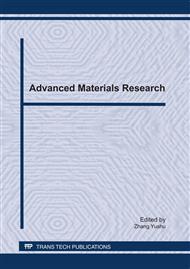p.608
p.613
p.618
p.623
p.628
p.633
p.638
p.643
p.647
Study on Bonding Performance of Interlayer Materials between Old Cement Slab and Asphalt Overlay
Abstract:
Aiming at work condition between the layers for repaving bituminous surface on old cement concrete pavement, this paper put forward bond strength of the "black and white" depends on three factors which are asphalt membrane in asphalt concrete, bonding layer (bonding oil and interlayer), surface condition of cement slab; through methods of the indoor molding specimens and on-site coring and sampling, direct drawing contrast test was conducted for the three typical overlay bonding layer structure (setting fiberglass grid, setting APP felt, without interlayer), results showed that: bond strength sorting of the "black and white" interface based on surface condition of the old cement slab: rough surface> smooth surface>original surface; setting fiberglass grid decrease bond stability between layers, but the "notch groove ", to a certain extent, compensate for the decline in bond strength, while setting APP felt interlayer has great beneficial to bond performance of the "black and white" interface . Through the analysis of the mechanism of bond strength and drawing test, research results have very important value for guiding construction and design of asphalt overlay.
Info:
Periodical:
Pages:
633-637
Citation:
Online since:
February 2011
Authors:
Keywords:
Price:
Сopyright:
© 2011 Trans Tech Publications Ltd. All Rights Reserved
Share:
Citation:


